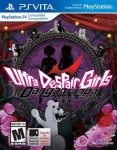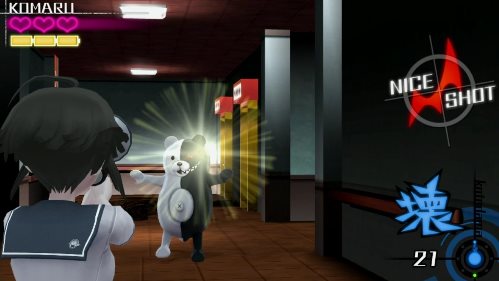Reader Review: Danganronpa Another Episode: Ultra Despair Girls (PS Vita)
 Well this is unexpected! The Danganronpa games have always been story-driven interactive visual novels, and my friend Leroy really liked them so I him review this one, too. Turns out this one is a third-person shooter! Uh oh! I hope my friend still liked it! Find out in his review!
Well this is unexpected! The Danganronpa games have always been story-driven interactive visual novels, and my friend Leroy really liked them so I him review this one, too. Turns out this one is a third-person shooter! Uh oh! I hope my friend still liked it! Find out in his review!
The original Danganronpa game was not something I expected to like. I’m not really a fan of modern anime and the visual novel genre is generally not for me, as I am a very pure “gameplay” gamer. But it ended up hooking me in pretty hard. I had some hesitation with the sequel for so closely repeating the murder mystery plotline, but it was largely saved by a single character taking the concept over the edge. In that regard, I was a little excited to hear the next game was going to be very different.
Danganronpa Another Episode: Ultra Despair Girls is a third person shooter, a drastic difference from the low-impact gameplay of its visual novel predecessors. However, it does maintain most of the aspects that made the other games so intriguing: fantastic visual and audio style, absolutely nutty characters and a dark, twisted story. Ultra Despair Girls serves as a side-story to the main plot (as the title Another Episode clues). It takes places between the first two games and serves to fill in some background and setup potential futures.
You play as Komaru, a girl who starts out mysteriously imprisoned in a rather nice apartment. An explosive attack and rescue happens and she is paired up with Toko, a character from the first game. Komaru is you primary character, armed with a hacking gun to battle a hoard of Monokuma robots. The gun has several functions outside of destroying things, it can be used to activate machines or make enemies dance, for example. Most of the functions outside of the primary destructive mode are used for more cerebral purposes. For example, making a certain type of Monokuma dance will attract all other nearby Monokumas, allowing you to avoid combat. This type of use is heavily focused on in a variety of puzzle rooms throughout the game, rewarding you for clearing them in ways other than blowing everything up.
As you play, a special meter charges up, which allows you to sporadically switch to Toko’s alter-ego Genocide Jack. Jack uses fast-paced, extremely powerful melee combat to take out enemies and is generally used in emergencies or to get through waves of enemies quickly and is oftentimes used in conjunction with Komaru’s hacking gun to take on bosses together.
Ultimately, the gameplay falls a bit flat. Movement and aiming is sluggish (while enemies are quite agile) and exploring the various stages is not very rewarding. The games does fine with giving a sense of progression with upgrades and new gun functions, but it is all ultimately held down by the game mechanics not feeling as strong as they could be. The enemy variety is lacking and the reliance on having them jump out of windows or corners to “scare” you very quickly becomes expected. The puzzles rooms are sometimes fun to work out and the boss battles can be fun.
Of course, most people that will be interested in this game probably won’t give the gameplay much thought, as the price of admission here is to surround yourself with another dose of Danganronpa characters and plots. While there are a few things going on in the game, most of the game is spent dealing with a group of five children, as they are the primary antagonists. Uh huh. Kids are taking over the city and (primary through use of Monokumas) are killing adults. That might work, but the five leaders are really, really, really awful characters. The kids all taking up roles as cliched RPG heroes is amusing, but the kids are presented as these dark and creepy characters and it just doesn’t work. Most of the attempts to write the children as dark or creepy comes off as trying too hard. Granted, subtlety is not something that exists in Danganronpa characters, but it could’ve served well in this instance to make the game’s primary bad guys somewhat tolerable (or believable).
Despite the kids’ plots, there is a whole lot of other Danganronpa things going on and this is what you’ll want to stick around for. It gets pretty dark and pretty crazy and I would be a terrible person for saying much more because this is the part of the game that you want to be surprised with and take in more than anything else.
Overall though, this one is for fans only. The gameplay doesn’t stand on its own and the plot (the part of it that I liked, at least) is really best enjoyed by somebody that had played the first two games.
Kid Factor
While rated M for a whole lot of awful things, I maintain as I did with the other two games that this game could be okay for (and is, realistically, probably intended for) teenagers, if you know they can handle dealing with darker subject matter (we do go pretty deep in here, lots of child abuse subject matter). Most of the violence and sexuality is written and implied, not shown, although you will see some as well (and all blood is still neon pink). –Leroy Capasso






Discussion Area - Leave a Comment